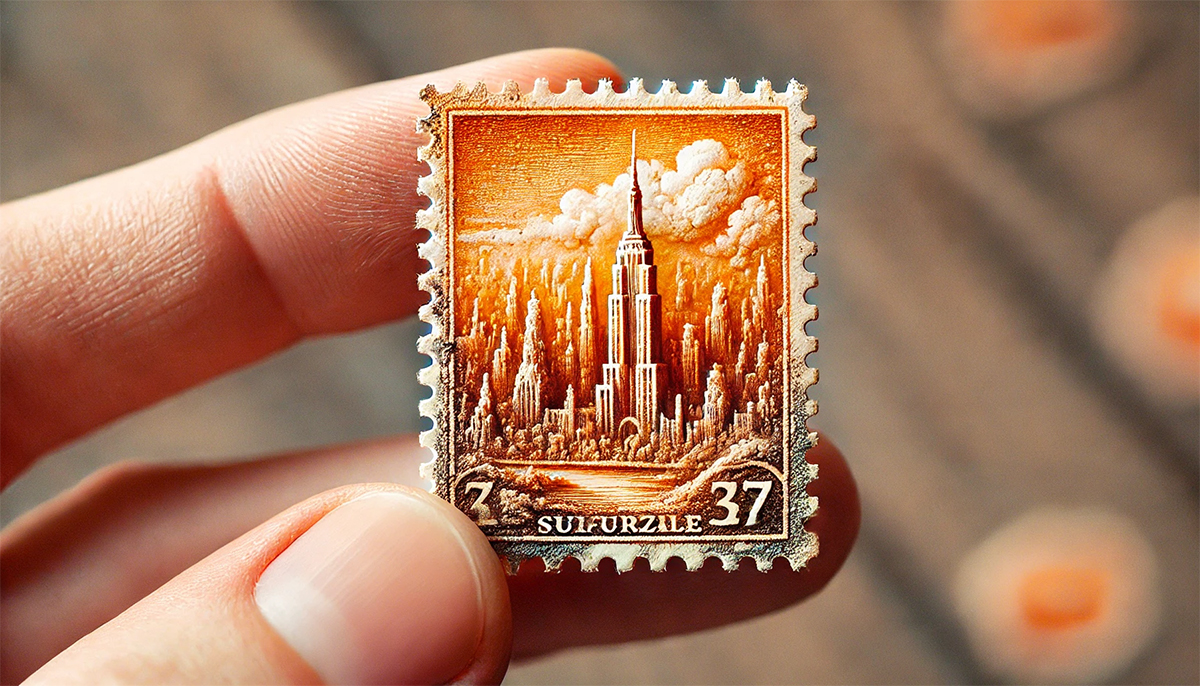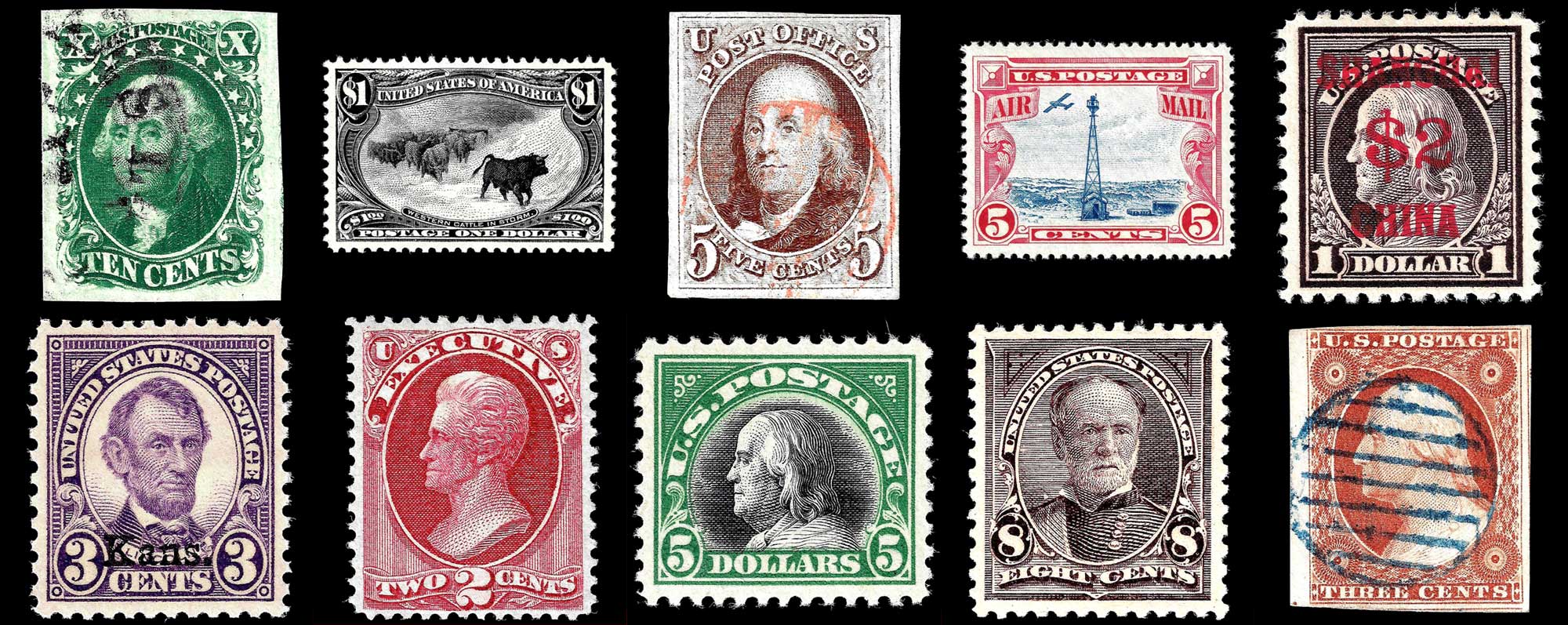If you’re a seasoned stamp collector, you’ve likely encountered a brown stamp that should be orange, according to the stamp catalog.
Unfortunately you haven’t discovered a printing error, making the stamp worth thousands of dollars. Instead, what you have is an example of “sulphurization”.
What Is Sulphurization?
Sulfurization is a chemical process that can change the color of stamps that contain lead in their ink. It’s caused by sulfur in the air combining with the lead in the colored pigment, which darkens the stamp.
This mainly occurs on orange stamps issued before 1930, but can happen to any pigment containing lead.
This process is often called oxidation, but that’s incorrect. It is sulfur causing the reaction, not oxygen.
Causes Of Sulphurization
So what’s the culprit? Let’s start with a common place where people store their stamp collections.
Many gun safes are enclosed with gypsum board and then carpeted. This board contains sulfur. When storing stamps in a gun safe for long periods of time, sulphurization is likely to occur.
Also many older homes contain sulfur in their drywall. So simply leaving stamps exposed in your home for long periods of time may cause sulphurization as well.
Impact On Value
From a valuation perspective, sulfurized stamps may be worth less than their well-preserved counterparts.
Collectors and buyers often prefer stamps in their original, unaltered state, and sulfurization may be seen as a form of damage that reduces a stamp’s appeal, and market value.
In turn, a buyer may be more hesitant to purchase a sulphurized stamp, if they aren’t aware of solutions that can restore it.
Luckily there is an easy and cheap way to restore your sulphurized stamps without damaging it or disturbing its original gum in any way.
How To Remove Sulfurization From Stamps
This method is very effective for removing the sulfurization from stamps, and restoring them to their original color. More importantly, this process can be done without damaging the stamp, or disturbing its original gum in any way. It is also referred to as “fuming” a stamp.
Step 1: Get a glass cup or small container.
Step 2: Get a paper towel and separate its thickness into two separate sheets by peeling them apart, so that you have two, single-ply sheets.
Step 3: fill the container half way with hydrogen peroxide. Note that hydrogen peroxide quickly looses its potency after being opened for the first time, so if you don’t see results, you may need to open a new bottle..
Step 4: Place one of the paper towel sheets over the cup, place a rubber band around it and and pull it tight so that the surface is straight.
Step 5: Place a stamp face down on top of the paper towel. Check back in 24 hours.
You should notice a significant difference in the color of the stamp, changing back to its original orange color. If not, dispose of the used hydrogen peroxide and repeat steps 3 to 5.
NOTE: At no time should the stamp come in contact with the hydrogen peroxide. This method secures the stamp well above the hydrogen peroxide, safely on top of the tightened paper towel.
Also make sure there are some spaces around the stamp where the peroxide can evaporate. The stamp may receive moisture damage if there is not enough breathing room around it.
Preventive Measures
Preventing stamp sulfurization requires careful attention to storage and handling practices. Here are some effective strategies for collectors:
- Optimal Storage: Avoid using gun safes or containers made from materials that can release sulfur compounds. Find a safe that doesn’t contain drywall, or consider removing it.
- Avoid Direct Sunlight: Keep stamps away from direct sunlight. Use UV-filtering sleeves or storage boxes to protect them from harmful UV rays that can accelerate chemical reactions.
- Regular Inspection: Periodically inspect your collection for any signs of discoloration or damage. Early detection of sulfurization can help you take timely action to mitigate further damage.
Stamp sulfurization is a common, yet preventable phenomenon that poses a challenge to philatelists. By understanding the causes and effects of sulfurization, you can apply effective preventive measures to safeguard your stamps.


















Ask A Question Or Leave A Comment